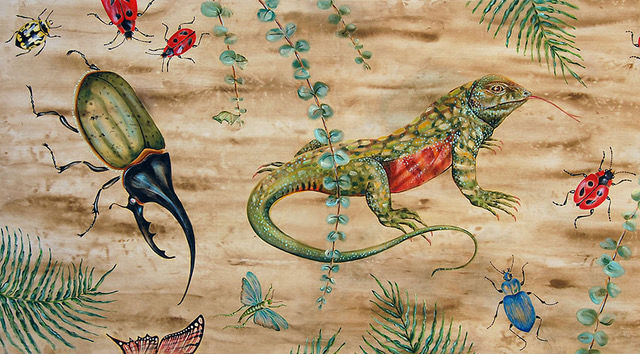
The designing of decorative printed textiles, like much else, has changed radically with technology. Once the ideas for textile designs were usually originally created beforehand by paintings on paper, today they are mostly made through the use of computer-aided design software and then digitally printed. The American artist Laura Honse has discovered a new fondness for creating her own fabrics in a traditional method using paints, brushes & sponges freehand directly on textiles. Although painting (alongside photography) was one of her areas of study at the Rhode Island School of Design, where she graduated with a BFA, she has discovered that painting on textiles is very different from painting on canvas or linen. Unlike canvas or linen, the cloth has not been pretreated beforehand, and paint may soak in rapidly and spread easily or sometimes, on the other hand, be very hard to spread. Controlling the paint is difficult and varies depending on which type of fabric is used, the closeness of the weave and the thickness of the fabric. Soft washes are often desirable as backgrounds and help to then contain the paint used further on the cloth. Translucency lends itself, as when painting a watercolor, to depth. Mistakes are hard to correct, as the build up of too much paint should be avoided.
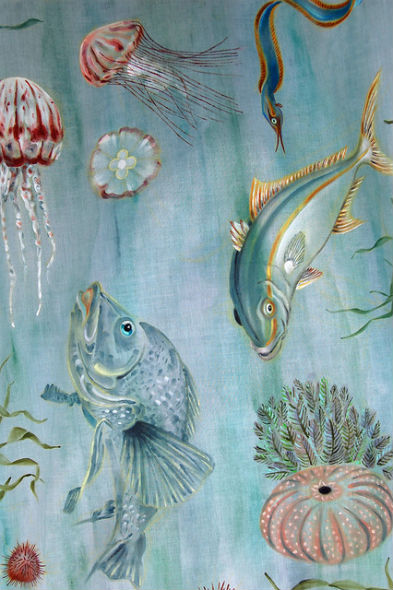
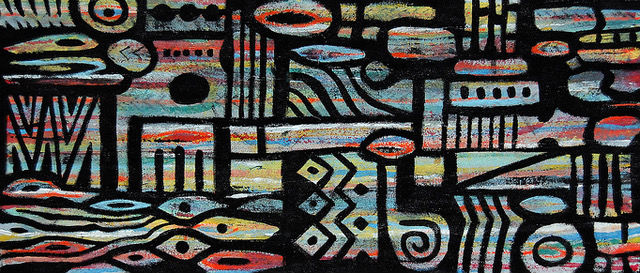
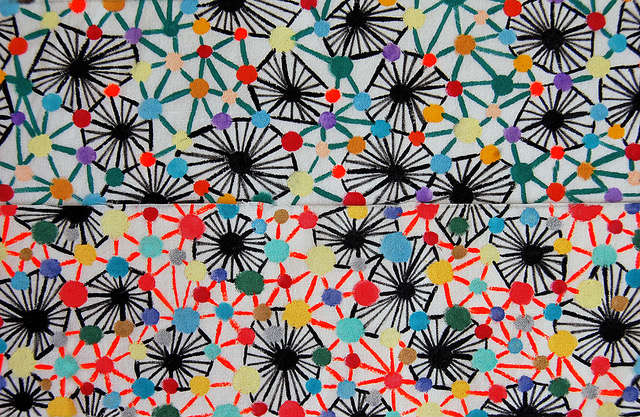
Laura started out by painting rebozos on cotton fabric two meters in length with intricate landscapes of flora and fauna using nature books from the library to assist her. Iguanas, butterflies and various beetles amidst eucalyptus branches and ferns. Ocean depths with fish, squid, eels, octopus, medusa and starfish swimming alongside coral, sea anemone and seaweed. A Mexican flora of cacti and nopal with a variety of birds. These rebozos have been bought as decorative wall hangings or used draped ornamentally across the foot of the bed.
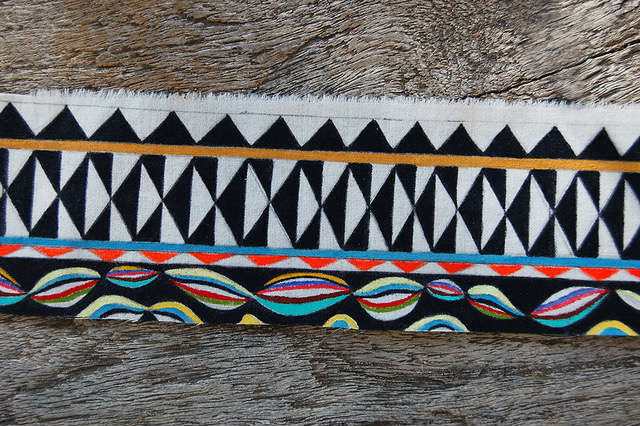
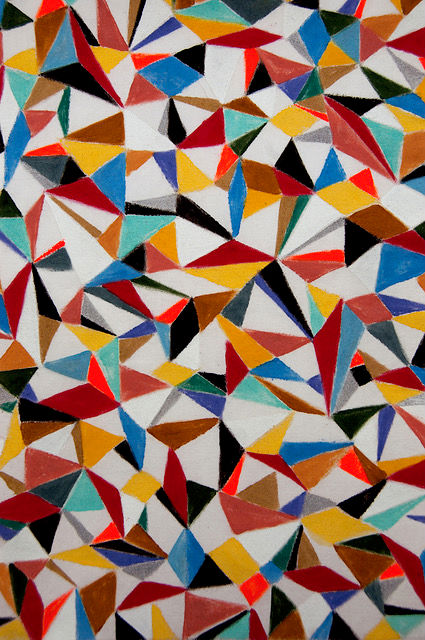
After a series of rebozos, Laura became inspired to fashion a line of necklaces out of hand-painted cloth in order that her work could be more wearable. Few, besides herself, were daring enough to wrap themselves up in a rebozo that was an entire painted landscape. So she went from working on cloth two meters long to painting small narrow strips. Using silk or cotton fabrics, she hand-paints them in soft washes, bold geometrical patterns, minute surreal landscapes, colorful tribal designs or even one inspired on Monet's water lily paintings. Usually a small strip of fabric is first painted, cut up, then sewn together and stuffed with bunting into a small cushion. But sometimes she first sews up the cushions and fills them with bunting, then painstakingly paints each cushion separately. Her source of inspiration is endless, ranging from Aztec, Surrealism, Cubism, Bauhaus, Art Brut to Africa and Japan.
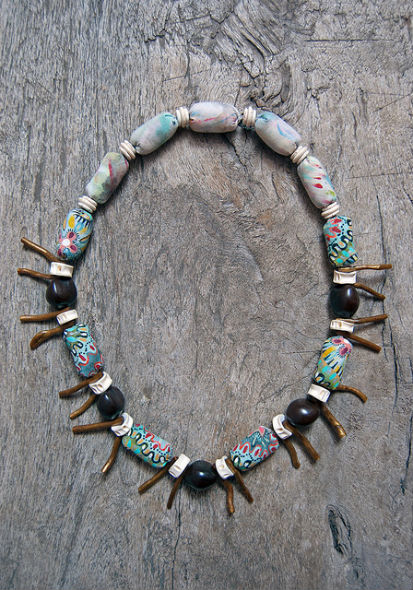
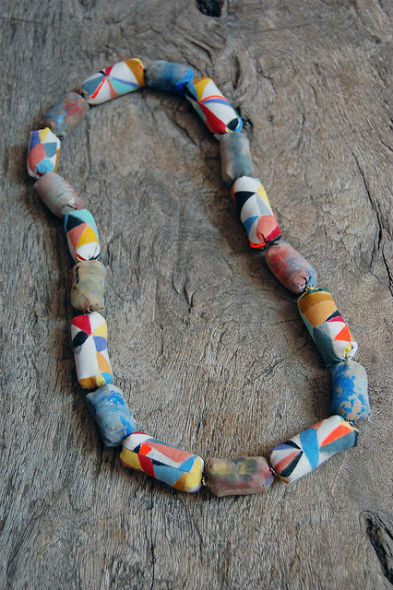
At times, Laura will incorporate other materials alongside the hand-painted fabric beads: seedpods, gold coral, wooden beads, shark vertebrae, buttons... One necklace even has various sewing machine stitching over the painted fabric. The necklaces are extremely lightweight and easy to wear, although upon first seeing them they are often mistaken for ceramic beads. She was once told that a much easier solution would be to go up to Parisina, the fabric shop on the outskirts of town, and buy commercial fabric that was already printed on. Which for her defeats the very purpose of her work: to create from scratch, to allow herself the freedom and inspiration to immerse herself in the creation of her own designs, to free herself from the mass produced, the machine-made and to reflect her yearning for a more sustainable lifestyle. Her hand-painted fabrics are a shying away from technological perfection and coldness, a search for the meditative slowing down of time inherent to creating by hand rather machine. Her necklaces are organic looking and feeling, voluptuous, sensual and soft, the obvious painterly quality considered an advantage rather than a disadvantage. And her rebozos are dream landscapes whose beauty has as much to do with paint as the sensuality of cloth. Who knows what the next step in textile painting will lead her to...
Laura Honse was born in the US and grew up overseas in Brasil, Uruguay, Australia and New Zealand. She lived twenty years in Germany prior to relocating to San Miguel de Allende.

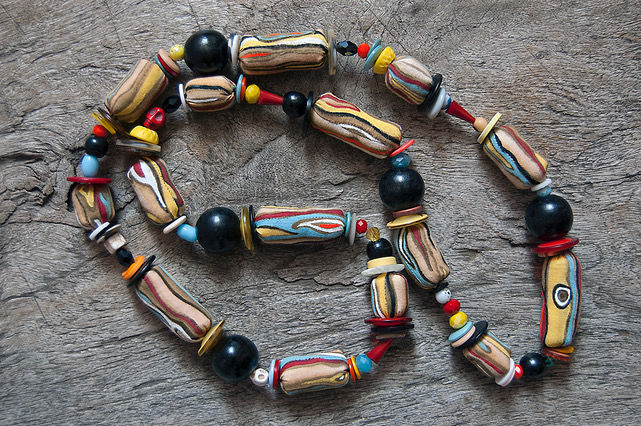
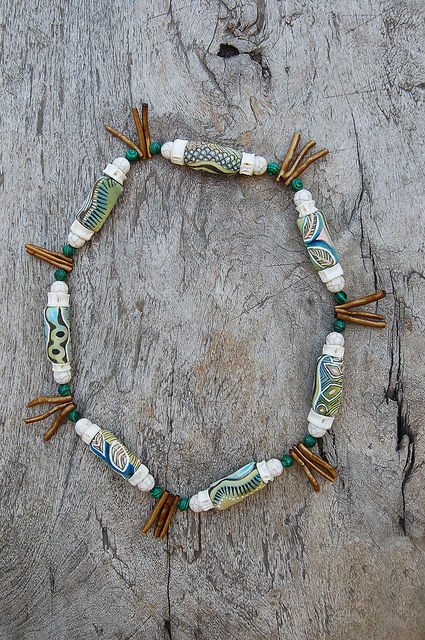
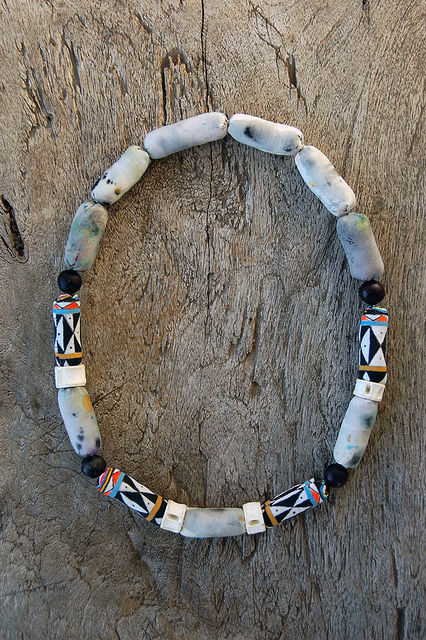
**************
Saturday, December 9, 1-7pm
La Tienda, Umaran 19
Free
Trunk Show, Hand-Painted Fabric Necklaces - opening
On Saturday, December 9, from 1 to 7pm, the artist Laura Honse will present her new collection of very unique fabric necklaces at La Tienda. Using silk and cotton fabrics, she hand-paints them in soft washes, bold geometric patterns, miniature surreal landscapes or colorful tribal patterns and then sews them into small cushions which she fills with bunting and strings into necklaces. Some necklaces also incorporate other materials such as wooden beads, buttons, seedpods or even shark vertebrae. Very lightweight, these painterly accessories are a delightful eye-catcher that make any outfit elegantly avant-garde.
We look forward to seeing you!
**************
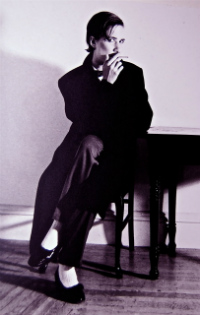 Laura Honse, born in the U.S., was raised overseas in Brazil, Uruguay, Australia, New Zealand and the Bahamas. She studied painting and photography at the Rhode Island School of Design in the USA, graduating with a BFA. After living in New York and San Francisco, she spent twenty years in Germany, where she opened Gallery Atomic Salon in Hamburg. Besides painting, she photographs and make collages. She now resides in Mexico, where she has exhibited her photography in San Miguel de Allende at El Nigromante Bellas Artes and at Art Print and in Leon at Instituto Cultural de Leon.
Laura Honse, born in the U.S., was raised overseas in Brazil, Uruguay, Australia, New Zealand and the Bahamas. She studied painting and photography at the Rhode Island School of Design in the USA, graduating with a BFA. After living in New York and San Francisco, she spent twenty years in Germany, where she opened Gallery Atomic Salon in Hamburg. Besides painting, she photographs and make collages. She now resides in Mexico, where she has exhibited her photography in San Miguel de Allende at El Nigromante Bellas Artes and at Art Print and in Leon at Instituto Cultural de Leon.
You must register and log in to write a comment.
Please use the "login" link at the top (right) of the page.
|